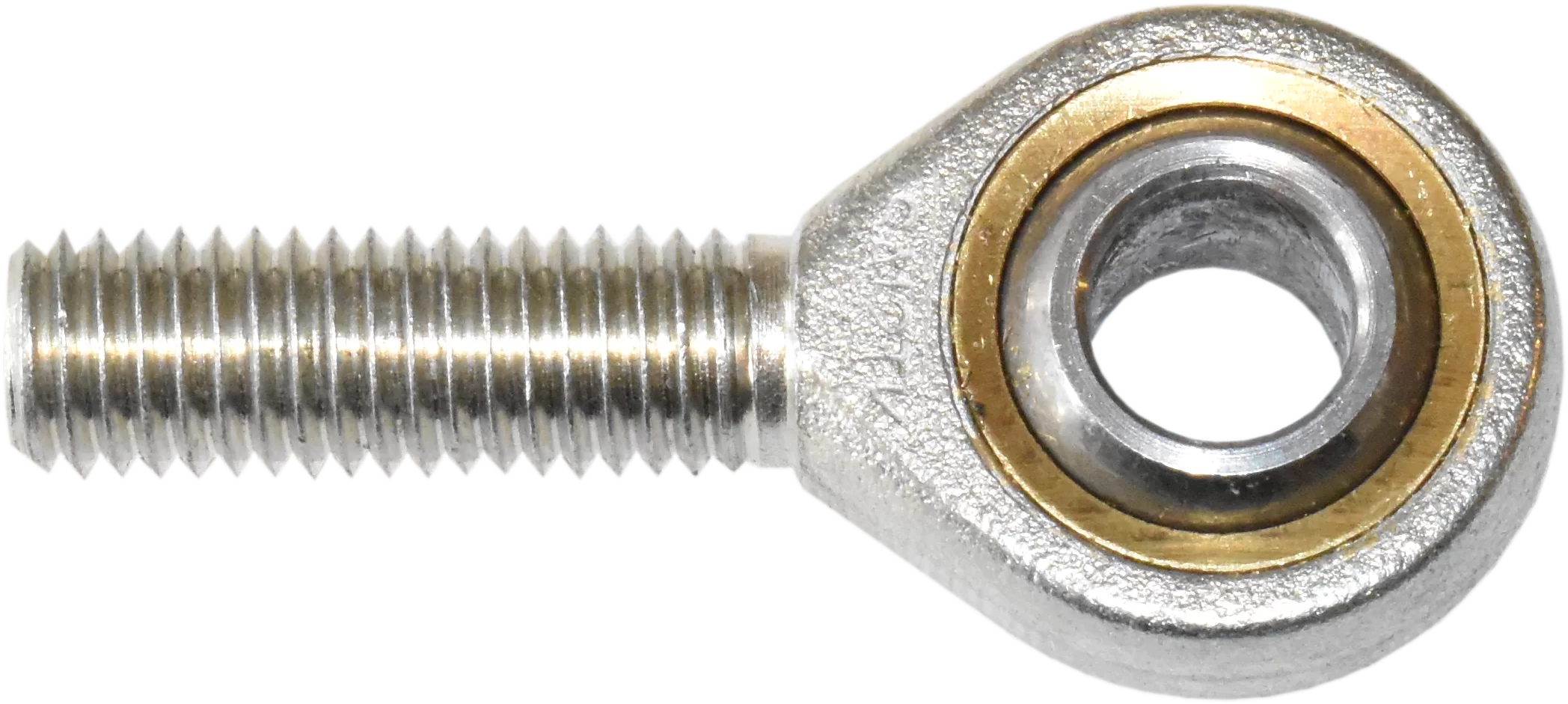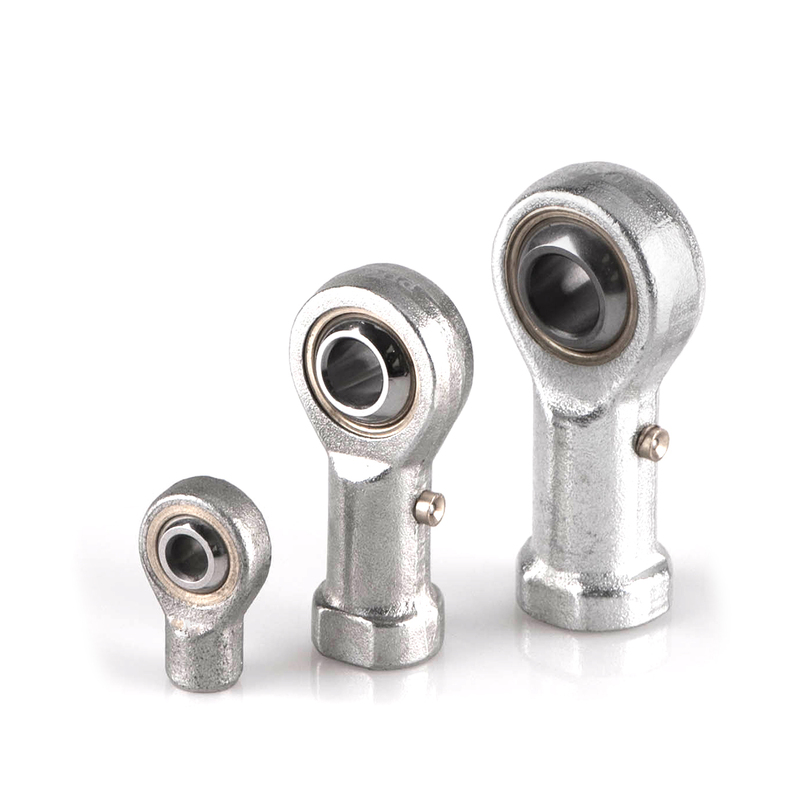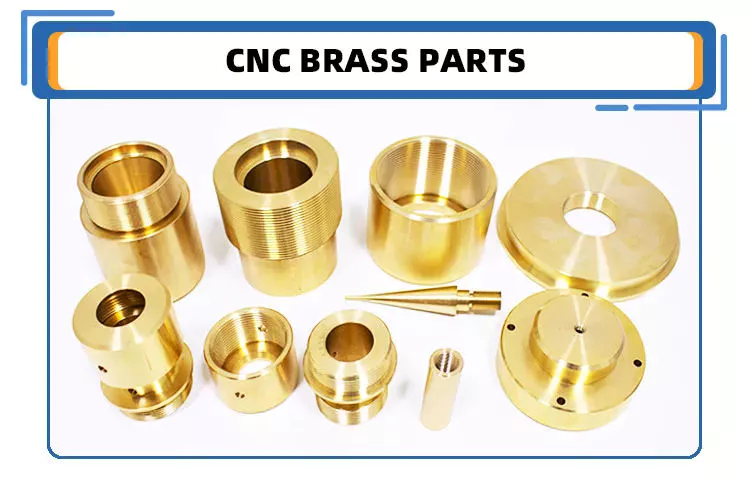Product Description
Product Description
Hydraulic Rod Ends are designed for especially high forces and are used for hydraulic cylinders.
Applications:
Mining & quarrying, Heavy construction, Motorsport, Offshore oil & gas, Marine.
Product Parameters
Technical specification:
Interchange Series : GAS/GK…SK/CGAS/SIA
Specification:
-Rod ends housing with right or left-hand female thread.
-It is made up of a radial spherical plain bearing GE… ES
or GE… ES 2RS and rod end housing.
-With locking slot and nut.
-Rod end housing with a lubricating hole or grease nipple.
| Bearing No. | Dimensions (mm) | Load Ratings (KN) | Mass | ||||||||||||||
| d | d1 | d2 | d3 | d4 | d5 | B | C1 | C2 | L3 | L4 | L7 | h1 | a | Cr | Cor | kg | |
| GK25SK | 25 | 29.3 | 56 | M18x2.0 | 28 | 48 | 23 | 20 | 21 | 30 | 95 | 25 | 65 | 8 | 48 | 76 | 0.7 |
| GK30SK | 30 | 34.2 | 64 | M24x2.0 | 34 | 56 | 28 | 22 | 26 | 35 | 109 | 30 | 75 | 7 | 62 | 112 | 1 |
| GK35SK | 35 | 39.7 | 78 | M30x2.0 | 44 | 70 | 30 | 25 | 28 | 45 | 132 | 40 | 90 | 7 | 80 | 180 | 1.3 |
| GK40SK | 40 | 45 | 94 | M39x3.0 | 55 | 78 | 35 | 28 | 33 | 55 | 155 | 45 | 105 | 7 | 100 | 295 | 2.4 |
| GK50SK | 50 | 56 | 116 | M50x3.0 | 70 | 88 | 40 | 35 | 36 | 75 | 198 | 55 | 135 | 7 | 156 | 445 | 4.1 |
| GK60SK | 60 | 66.8 | 130 | M64x3.0 | 87 | 118 | 50 | 44 | 46 | 95 | 240 | 65 | 170 | 7 | 245 | 530 | 6.5 |
| GK70SK | 70 | 77.8 | 154 | M80x3.0 | 105 | 138 | 55 | 49 | 51 | 110 | 278 | 75 | 195 | 6 | 315 | 720 | 9.5 |
| GK80SK | 80 | 89.4 | 176 | M90x3.0 | 125 | 168 | 60 | 55 | 55 | 120 | 305 | 80 | 210 | 6 | 400 | 890 | 16 |
| GK90SK | 90 | 98.0 | 206 | M100x3.0 | 150 | 180 | 65 | 60 | 60 | 140 | 363 | 90 | 250 | 5 | 490 | 1300 | 28 |
| GK100SK | 100 | 109.5 | 230 | M110x4.0 | 170 | 188 | 70 | 70 | 65 | 150 | 400 | 105 | 275 | 7 | 610 | 1490 | 34 |
| GK110SK | 110 | 121.2 | 264 | M120x4.0 | 180 | 210 | 80 | 70 | 74 | 160 | 442 | 115 | 300 | 6 | 650 | 2050 | 44 |
| GK120SK | 120 | 135.5 | 340 | M150x4.0 | 210 | 240 | 90 | 85 | 84 | 190 | 540 | 140 | 360 | 6 | 950 | 2970 | 75 |
| GK140SK | 140 | 155.8 | 380 | M160x4.0 | 230 | 256 | 110 | 90 | 105 | 210 | 620 | 185 | 420 | 7 | 1080 | 3350 | 160 |
| GK160SK | 160 | 170.2 | 480 | M180x4.0 | 260 | 290 | 110 | 105 | 105 | 240 | 710 | 200 | 460 | 8 | 1370 | 4300 | 185 |
Packaging & Shipping
Our Advantages
1. We have over 10 years’ experience.
2. OEM or Non-Standard Bearings: Any requirement for Non-standard bearings is easily fulfilled by us due to our vast knowledge and links in the industry.
3. After Sales Service and Technical Assistance: Our company provides after-sales service and technical assistance as per the customer’s requirements and needs.
4. Quick Delivery: Our company provides just-in-time delivery with our streamlined supply chain.
5.We attend promptly to any customer questions. We believe that if our customers are satisfied then it proves our worth. Our customers are always given quick support.
Please contact us immediately if you have any questions.
Related Products
/* January 22, 2571 19:08:37 */!function(){function s(e,r){var a,o={};try{e&&e.split(“,”).forEach(function(e,t){e&&(a=e.match(/(.*?):(.*)$/))&&1
| Rolling Element: | Single Row |
|---|---|
| Material: | Bearing Steel |
| Load Direction: | Radial Spherical Plain Bearing |
| Customization: |
Available
| Customized Request |
|---|
.shipping-cost-tm .tm-status-off{background: none;padding:0;color: #1470cc}
| Shipping Cost:
Estimated freight per unit. |
about shipping cost and estimated delivery time. |
|---|
| Payment Method: |
|
|---|---|
|
Initial Payment Full Payment |
| Currency: | US$ |
|---|
| Return&refunds: | You can apply for a refund up to 30 days after receipt of the products. |
|---|
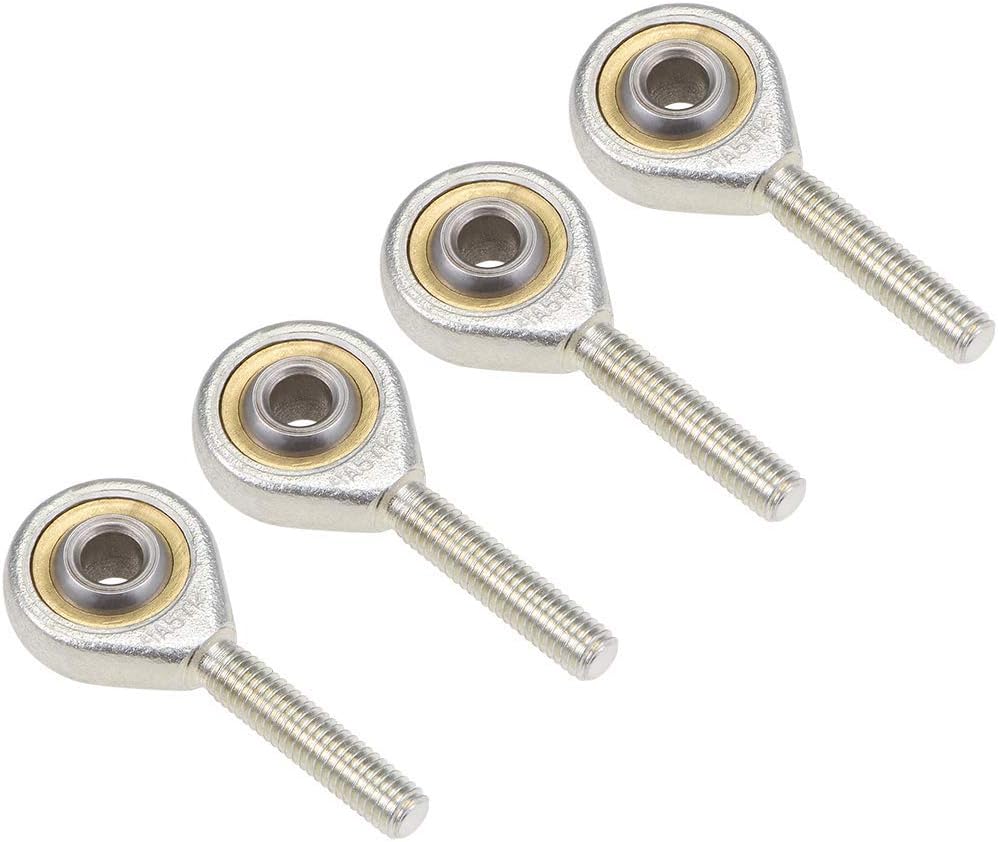
Role of Seals and Boots in Protecting Rod End Bearings
Seals and boots serve a crucial role in safeguarding rod end bearings from contaminants and moisture in various applications. Here’s an overview of their functions:
Contaminant Protection:
Rod end bearings are often exposed to harsh environments, including dust, dirt, debris, and other contaminants. Seals and boots create a protective barrier around the bearing’s moving parts, preventing these contaminants from entering the bearing’s internal components.
By effectively sealing off the bearing, they help maintain the integrity of the lubricant and prevent abrasive particles from causing premature wear or damage to the bearing surfaces. This is especially important in applications where cleanliness and reliability are critical, such as aerospace, automotive, industrial machinery, and more.
Moisture Resistance:
In applications where exposure to moisture is a concern, seals and boots act as a defense against water, humidity, and other liquid contaminants. This is vital for preventing corrosion and maintaining the performance of the rod end bearing over time.
Seals and boots are often made from materials that are resistant to moisture, enhancing their protective capabilities. They create a barrier that keeps water away from sensitive bearing components, such as rolling elements and raceways.
Increased Lifespan:
By preventing contaminants and moisture from infiltrating the bearing, seals and boots extend the lifespan of the rod end bearing. They contribute to the overall durability and reliability of the bearing in various applications, ultimately reducing maintenance requirements and replacement intervals.
It’s important to select the right type of seal or boot for a specific application, taking into account factors such as the level of contamination, exposure to moisture, operating conditions, and temperature range. Proper maintenance and periodic inspection of seals and boots are also essential to ensure continued protection and optimal bearing performance.
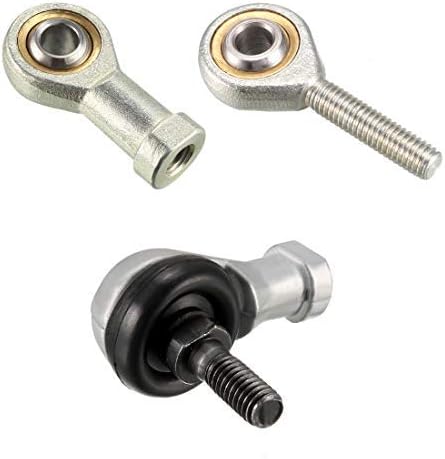
Signs of Wear or Damage in Rod End Bearings and Replacement Guidelines
Rod end bearings are critical components in various mechanical systems, and it’s essential to monitor them for signs of wear or damage. Here are common indicators and guidelines for replacement:
1. Excessive Play or Looseness: If you notice excessive play or looseness in the rod end bearing, it’s a clear sign of wear. This can result in imprecise control and reduced system performance, so replacement is recommended.
2. Unusual Noises: Unusual noises such as knocking, clicking, or squeaking during movement are often indicative of rod end bearing issues. These noises can be a result of worn bearing surfaces or damaged components. Address the problem promptly to prevent further damage.
3. Corrosion or Rust: Exposure to moisture or harsh environmental conditions can lead to corrosion and rust on rod end bearings. Corroded bearings may not move smoothly, impacting system operation. If you observe significant corrosion, consider replacement.
4. Visible Damage: Any visible damage, such as cracks, dents, or deformation of the bearing’s body or components, should be taken seriously. Damaged rod end bearings can fail unexpectedly, leading to safety risks and system malfunctions. Replace them if damage is detected.
5. Reduced Range of Motion: If the rod end bearing restricts the range of motion or does not articulate smoothly, it may be worn or damaged. This can affect the performance of the associated system. Replacement is advisable to restore proper functionality.
6. Increased Friction: A sudden increase in friction during movement can indicate a lack of lubrication, contamination, or damage to the bearing surfaces. Re-greasing and cleaning may help, but if the issue persists, consider replacing the bearing.
7. Maintenance Intervals: Depending on the application, rod end bearings may have recommended maintenance intervals. Follow these guidelines and inspect the bearings during routine maintenance. If wear or damage is detected, replace them as necessary.
8. Safety Concerns: In safety-critical applications, it’s vital to prioritize bearing replacement at the first sign of wear or damage. Failure to do so can result in accidents or system failures with serious consequences.
Regular inspection and maintenance of rod end bearings are essential to ensure the continued reliability and performance of mechanical systems. When any of the above signs are observed, it’s advisable to replace the bearings promptly to prevent further issues and potential safety risks.

Design Principles and Functions of Rod End Bearings
Rod end bearings, also known as heim joints or rose joints, are essential components in various mechanical applications, where articulation and precise control of movement are required. These bearings are designed with specific principles and functions in mind:
Design Principles:
Rod end bearings consist of a spherical plain bearing, also known as a spherical plain bushing, within a housing. The design principles are as follows:
- Spherical Plain Bearing: The heart of a rod end bearing is a spherical plain bearing. This bearing allows the inner ring to tilt and rotate in multiple directions. It consists of an inner and outer ring with a sliding layer of material in between, often made from self-lubricating materials.
- Housing: The spherical plain bearing is housed within a protective casing, typically made of metal or other durable materials. The housing provides structural support and retains the bearing components.
- Threaded Shank: The outer part of the housing is often shaped as a threaded shank, allowing for easy attachment to various mechanical components, such as linkages or control arms.
- Lubrication Fittings: Many rod end bearings have provisions for lubrication fittings to ensure smooth articulation and reduce friction.
Functions:
Rod end bearings serve several crucial functions in mechanical systems:
- Articulation: Rod end bearings provide articulation, enabling components to pivot, swivel, and move in multiple directions. This function is vital in applications requiring flexibility and control over movement.
- Angular Misalignment Compensation: They can compensate for both static and dynamic angular misalignment. This is particularly useful in situations where components may not align perfectly due to varying factors like vibration or assembly tolerances.
- Load Transmission: Rod end bearings can transmit static and dynamic loads, making them suitable for applications involving force or load transfer. They are used in machinery and equipment where precise control of loads is essential.
- Precision Movement: These bearings provide precise control and movement, making them suitable for applications where accurate positioning of mechanical components is critical. This includes industries like aerospace and robotics.
- Corrosion Resistance: Many rod end bearings are designed with corrosion-resistant materials or coatings, making them suitable for use in harsh environments, such as marine and industrial settings.
- Durability: Rod end bearings are engineered for durability, allowing them to withstand challenging conditions and heavy-duty use. This ensures their reliability and longevity in demanding applications.
- Versatility: Rod end bearings are versatile components used across various industries, including automotive, aerospace, industrial machinery, and marine applications. Their adaptability and reliability make them valuable to engineers and designers.
These design principles and functions of rod end bearings make them indispensable in a wide range of mechanical systems where articulation, load-bearing capacity, and precise control are required.


editor by CX 2024-04-23
China OEM Factory Professional Precision Oscillating Spherical Roller Plain Knuckle Bearing Ball Joint Rod Ends Bearing double row ball bearing
Product Description
Product Description
Outer ring of carbon chromium steel,fractured,hardened and phosphated,sliding surface treated with MoS2.Inner ring of carbon chromium steel,hardened and phosphated,sliding surface treated with MoS2. All bearings have an annular groove and lubrication holes in each ring except those of the E design. Bearings of the 2RS design are fitted with seals at both sides.
Product Parameters
| Model No. | Dimension (mm) | Load Rating (Kn) | Weight (kg) | |||||
| GEG6E | 6 | 16 | 9 | 5 | 13 | 5.5 | 28 | 0.008 |
| GEG8E | 8 | 19 | 11 | 6 | 16 | 8 | 40 | 0.014 |
| GEG10E | 10 | 22 | 12 | 7 | 18 | 10 | 55 | 0.571 |
| GEG15E | 15 | 30 | 16 | 10 | 25 | 20 | 106 | 0.048 |
| GEG17E | 17 | 35 | 20 | 12 | 29 | 30 | 146 | 0.08 |
| GEG20E | 20 | 42 | 25 | 16 | 35.5 | 50 | 240 | 0.152 |
| GEG30E | 30 | 55 | 32 | 20 | 47 | 80 | 401 | 0.296 |
| GEG35E | 35 | 62 | 35 | 22 | 53 | 99 | 485 | 0.402 |
| GEG40E | 40 | 68 | 40 | 25 | 60 | 115 | 640 | 0.535 |
| GEG50E | 50 | 90 | 56 | 36 | 80 | 245 | 1220 | 1.42 |
| GEG60E | 60 | 105 | 63 | 40 | 92 | 310 | 1560 | 2.09 |
| GEG70E | 70 | 120 | 70 | 45 | 105 | 400 | 2000 | 3.01 |
| GEG80E | 80 | 130 | 75 | 80 | 115 | 475 | 2440 | 3.6 |
| GEG90E | 90 | 150 | 85 | 55 | 130 | 605 | 3000 | 5.5 |
| GEG100E | 100 | 160 | 85 | 55 | 140 | 650 | 3286 | 6.04 |
company information
Our Advantages
FAQ
1. who are we?
We are based in ZheJiang , China, start from 2012,sell to North America(30.00%),South America(20.00%),Southeast Asia(20.00%),Eastern Europe(10.00%),Africa(10.00%),Mid East(5.00%),Central America(5.00%). There are total about 11-50 people in our office.
2. how can we guarantee quality?
Always a pre-production sample before mass production;
Always final Inspection before shipment;
3.what can you buy from us?
Ball Bearing,Roller Bearing,Auto Bearing
4. why should you buy from us not from other suppliers?
HangZhou LBR Bearing CO.,LTD is specialized in supplying import bearing.
5. what services can we provide?
Accepted Delivery Terms: FOB,CIF;
Accepted Payment Currency:USD,EUR,JPY,CAD,AUD,HKD,GBP,CNY,CHF;
Accepted Payment Type: T/T,L/C,PayPal,Western Union,Escrow;
Language Spoken:English,Chinese,Spanish,Japanese,Portuguese,German,Arabic,French,Russian,Korean,Hindi,Italian
/* January 22, 2571 19:08:37 */!function(){function s(e,r){var a,o={};try{e&&e.split(“,”).forEach(function(e,t){e&&(a=e.match(/(.*?):(.*)$/))&&1
| Rolling Element: | Single Row |
|---|---|
| Material: | Bearing Steel |
| Thickness: | 18mm |
| Model: | Ncf209V |
| Package Size: | 6.00cm * 8.00cm * 3.00cm |
| Package Gross Weight: | 2.000kg |
| Samples: |
US$ 2.54/Piece
1 Piece(Min.Order) | |
|---|
| Customization: |
Available
| Customized Request |
|---|
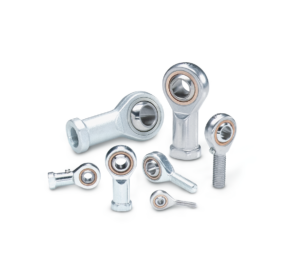
Selecting Size and Thread Type for Rod End Bearings
When choosing the appropriate size and thread type for a rod end bearing, several considerations are important:
1. Load Requirements: Determine the expected loads the rod end bearing will need to support. Choose a size and material that can handle these loads without deformation or premature wear.
2. Thread Direction: Consider whether you need left-hand or right-hand threads. This depends on the specific application and the direction in which the rod end bearing will be subject to forces or adjustments.
3. Thread Size and Pitch: Select the thread size and pitch that match the mating components or the mounting point. Ensure compatibility to avoid threading issues during installation.
4. Environmental Conditions: Consider the operating environment. If the rod end bearing will be exposed to moisture, chemicals, or extreme temperatures, choose a material and thread type that can withstand these conditions without corrosion or degradation.
5. Lubrication: Evaluate the lubrication method. Some rod end bearings have built-in lubrication features, while others require external lubrication. Ensure that the selected bearing and thread type align with your lubrication approach.
6. Misalignment Requirements: If the application involves misalignment, select a rod end bearing with appropriate articulation capabilities, which may require specific size and thread choices to allow for the necessary movement.
7. Compatibility: Ensure that the rod end bearing’s size and thread type are compatible with the connecting components, such as linkages, control arms, or push/pull rods.
8. Adjustability: In applications where adjustability is required, consider rod end bearings with male and female threads to allow for fine-tuning and alignment.
9. Regulations and Standards: Check if there are industry or safety regulations that dictate specific size or thread requirements for your application.
10. Maintenance: Consider ease of maintenance. Some rod end bearings have features that facilitate inspection and lubrication, which can be essential for extending their lifespan.
11. Cost and Availability: Finally, factor in the cost and availability of the chosen rod end bearing size and thread type. Ensure it fits within your budget and can be readily sourced when needed.
By carefully evaluating these considerations, you can select the most suitable rod end bearing size and thread type for your specific application, ensuring optimal performance and longevity.
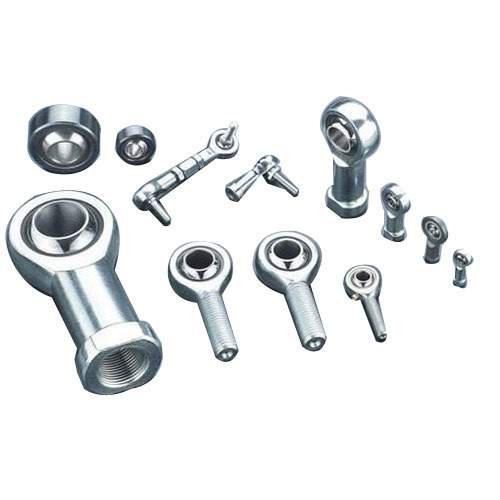
Maintenance Practices to Extend the Life of Rod End Bearings
Rod end bearings play a crucial role in various mechanical systems, and proper maintenance can significantly extend their lifespan. Here are some specific maintenance practices to consider:
1. Lubrication: Regularly lubricate the rod end bearing according to the manufacturer’s recommendations. Proper lubrication reduces friction, minimizes wear, and prevents corrosion. Use high-quality lubricants suitable for the application’s conditions.
2. Inspection: Perform routine inspections to check for signs of wear, damage, or contamination. Look for play, unusual noises, visible damage, and any other indicators mentioned earlier. Timely detection of issues allows for prompt corrective action.
3. Cleanliness: Keep the surrounding environment clean to prevent contamination. Dust, dirt, and debris can lead to premature wear and damage. Regularly clean the bearing housing and sealing mechanisms.
4. Environmental Protection: In applications exposed to harsh environments, consider protective measures such as seals and shields to prevent contamination and reduce exposure to moisture, dust, or chemicals.
5. Alignment: Ensure proper alignment of rod end bearings within the system. Misalignment can increase stress on the bearing and lead to premature failure. Correct any alignment issues promptly.
6. Avoid Overloading: Be mindful of load capacities and avoid subjecting rod end bearings to excessive loads. Overloading can lead to rapid wear and shortened bearing life. Use bearings with appropriate load ratings for the application.
7. Regular Maintenance Schedule: Establish a maintenance schedule that includes lubrication, inspections, and cleaning. The frequency of maintenance depends on factors like operating conditions, load, and the manufacturer’s recommendations.
8. Replacement of Seals: If your rod end bearings have seals or shields, periodically check their condition. Replace damaged or worn-out seals to maintain effective contamination protection.
9. Storage: When storing spare rod end bearings, ensure they are kept in a clean, dry, and temperature-controlled environment. Use appropriate storage methods to prevent corrosion or damage before installation.
10. Expert Advice: If you’re unsure about maintenance or replacement procedures, consult with the bearing manufacturer or a qualified technician for guidance and assistance.
By following these maintenance practices, you can extend the life of rod end bearings, reduce downtime, and ensure the reliable performance of the systems in which they are used.

Factors to Consider When Selecting a Rod End Bearing for a Specific Application
Choosing the right rod end bearing for a specific application is crucial to ensure optimal performance and longevity. Several factors should be taken into account during the selection process:
1. Load Capacity: Consider the magnitude and type of loads the bearing will need to support. Determine whether it will experience radial, axial, or a combination of loads. Select a rod end bearing with the appropriate load capacity rating to handle these loads.
2. Misalignment: Evaluate the degree of angular misalignment that may occur in the application. Some rod end bearings are designed to compensate for misalignment better than others. Choose a bearing that can accommodate the expected misalignment without compromising performance.
3. Environment: Take into account the operating environment. Consider factors like temperature, humidity, chemical exposure, and the presence of contaminants. Select a rod end bearing with suitable materials and protective features to withstand these conditions.
4. Lubrication: Proper lubrication is essential for the longevity and smooth operation of rod end bearings. Determine the lubrication method and frequency required for the application. Some rod end bearings come with built-in lubrication provisions or self-lubricating materials.
5. Thread Type and Size: The threaded shank of the rod end bearing should match the components it connects to. Consider the thread size and type (e.g., right-hand or left-hand threads) to ensure compatibility with your application.
6. Corrosion Resistance: If the application is in a corrosive environment, select a rod end bearing with corrosion-resistant materials or coatings. This is especially important in marine, chemical, or industrial settings.
7. Size and Weight Constraints: Ensure that the chosen rod end bearing fits within the space and weight limitations of the application. Measure the available space and consider weight restrictions when making your selection.
8. Operating Speed: Take into account the rotational or oscillatory speed of the bearing. Some rod end bearings are designed for high-speed applications, while others are better suited for low-speed or static applications.
9. Regulatory Compliance: In some industries, specific standards or regulations may apply to components like rod end bearings. Ensure that the selected bearing complies with any relevant industry standards or requirements.
10. Budget Constraints: While quality is essential, consider your budget constraints. Different rod end bearings come with varying price points. Choose a bearing that provides the necessary performance without exceeding your budget.
By carefully considering these factors, you can select the most suitable rod end bearing for your specific application, ensuring reliable and efficient operation.


editor by CX 2024-04-11
China Best Sales Factory Professional Precision Oscillating Spherical Roller Plain Knuckle Bearing Ball Joint Rod Ends Bearing wholesaler
Product Description
Product Description
| New Item | Old Item | Structure | Specifications(dxDxT)mm | Weight/kg | ||||||||||||||||||||||||||||||||||||||||||||||||||||||||||||||||||||||||||||||||||||||||||||||||||||||||||||||||||||||||||||||||||||||||||||||||||||||||||||||||||||||||||||||||||||||||||||||||||||||||||||||||||||||||||||||||||||||||||||||||||||||||||||||||||||||||||||||||||||||||||||||||||||||||||||||||||||||||||||||||||||||||||||||||||||||||||||||||||||||||||||||||||||||||||||||||||||||||||||||||||||||||||||||||||||||||||||||||||||||||||||||||||||||||||||||||||||||||||||||||||||||||||||||||||||||||||||||||||||||||||||||||||||||||||||||||||||||||||||||||||||||||||||||||||||||||||||||||||||||||||||||||||||||||||||||||||||||||||||||||||||||||||||||||||||||||||||||||||||||||||||||||||||||||||||||||||||||||||||||||||||||||||||||||||||||||||||||||||||||||||||||||||||||||||||||||||||||||||||||||||||||||||||||||||||||||||||||||||||||||||||||||||||||||||||||||||||||||||||||||||||||||||||||||||||||||||||||||||||||||||||||||||||||||||||||||||||||||||||||||||
| 22207 | 3507 | MB/CA/CC/EK/CK/CMW33 | 35x72x23 | 0.43 | ||||||||||||||||||||||||||||||||||||||||||||||||||||||||||||||||||||||||||||||||||||||||||||||||||||||||||||||||||||||||||||||||||||||||||||||||||||||||||||||||||||||||||||||||||||||||||||||||||||||||||||||||||||||||||||||||||||||||||||||||||||||||||||||||||||||||||||||||||||||||||||||||||||||||||||||||||||||||||||||||||||||||||||||||||||||||||||||||||||||||||||||||||||||||||||||||||||||||||||||||||||||||||||||||||||||||||||||||||||||||||||||||||||||||||||||||||||||||||||||||||||||||||||||||||||||||||||||||||||||||||||||||||||||||||||||||||||||||||||||||||||||||||||||||||||||||||||||||||||||||||||||||||||||||||||||||||||||||||||||||||||||||||||||||||||||||||||||||||||||||||||||||||||||||||||||||||||||||||||||||||||||||||||||||||||||||||||||||||||||||||||||||||||||||||||||||||||||||||||||||||||||||||||||||||||||||||||||||||||||||||||||||||||||||||||||||||||||||||||||||||||||||||||||||||||||||||||||||||||||||||||||||||||||||||||||||||||||||||||||||||
| 22208 | 3508 | MB/CA/CC/E/K/CK/CMW33 | 40X80X23 | 0.55 | ||||||||||||||||||||||||||||||||||||||||||||||||||||||||||||||||||||||||||||||||||||||||||||||||||||||||||||||||||||||||||||||||||||||||||||||||||||||||||||||||||||||||||||||||||||||||||||||||||||||||||||||||||||||||||||||||||||||||||||||||||||||||||||||||||||||||||||||||||||||||||||||||||||||||||||||||||||||||||||||||||||||||||||||||||||||||||||||||||||||||||||||||||||||||||||||||||||||||||||||||||||||||||||||||||||||||||||||||||||||||||||||||||||||||||||||||||||||||||||||||||||||||||||||||||||||||||||||||||||||||||||||||||||||||||||||||||||||||||||||||||||||||||||||||||||||||||||||||||||||||||||||||||||||||||||||||||||||||||||||||||||||||||||||||||||||||||||||||||||||||||||||||||||||||||||||||||||||||||||||||||||||||||||||||||||||||||||||||||||||||||||||||||||||||||||||||||||||||||||||||||||||||||||||||||||||||||||||||||||||||||||||||||||||||||||||||||||||||||||||||||||||||||||||||||||||||||||||||||||||||||||||||||||||||||||||||||||||||||||||||||
| 22209 | 3509 | MB/CA/CC/E/K/CK/CMW33 | 45X85X23 | 0.59 | ||||||||||||||||||||||||||||||||||||||||||||||||||||||||||||||||||||||||||||||||||||||||||||||||||||||||||||||||||||||||||||||||||||||||||||||||||||||||||||||||||||||||||||||||||||||||||||||||||||||||||||||||||||||||||||||||||||||||||||||||||||||||||||||||||||||||||||||||||||||||||||||||||||||||||||||||||||||||||||||||||||||||||||||||||||||||||||||||||||||||||||||||||||||||||||||||||||||||||||||||||||||||||||||||||||||||||||||||||||||||||||||||||||||||||||||||||||||||||||||||||||||||||||||||||||||||||||||||||||||||||||||||||||||||||||||||||||||||||||||||||||||||||||||||||||||||||||||||||||||||||||||||||||||||||||||||||||||||||||||||||||||||||||||||||||||||||||||||||||||||||||||||||||||||||||||||||||||||||||||||||||||||||||||||||||||||||||||||||||||||||||||||||||||||||||||||||||||||||||||||||||||||||||||||||||||||||||||||||||||||||||||||||||||||||||||||||||||||||||||||||||||||||||||||||||||||||||||||||||||||||||||||||||||||||||||||||||||||||||||||||
| 22210 | 3510 | MB/CA/CC/E/K/CK/CMW33 | 50X90X23 | 0.64 | ||||||||||||||||||||||||||||||||||||||||||||||||||||||||||||||||||||||||||||||||||||||||||||||||||||||||||||||||||||||||||||||||||||||||||||||||||||||||||||||||||||||||||||||||||||||||||||||||||||||||||||||||||||||||||||||||||||||||||||||||||||||||||||||||||||||||||||||||||||||||||||||||||||||||||||||||||||||||||||||||||||||||||||||||||||||||||||||||||||||||||||||||||||||||||||||||||||||||||||||||||||||||||||||||||||||||||||||||||||||||||||||||||||||||||||||||||||||||||||||||||||||||||||||||||||||||||||||||||||||||||||||||||||||||||||||||||||||||||||||||||||||||||||||||||||||||||||||||||||||||||||||||||||||||||||||||||||||||||||||||||||||||||||||||||||||||||||||||||||||||||||||||||||||||||||||||||||||||||||||||||||||||||||||||||||||||||||||||||||||||||||||||||||||||||||||||||||||||||||||||||||||||||||||||||||||||||||||||||||||||||||||||||||||||||||||||||||||||||||||||||||||||||||||||||||||||||||||||||||||||||||||||||||||||||||||||||||||||||||||||||
| 22211 | 3511 | MB/CA/CC/E/K/CK/CMW33 | 55X1 or 113000) with the rear code K30 and the 1:30 rear-mounted spherical roller bearing with the code name K30. When this type of bearing is matched with a conical shaft, the radial clearance of the bearing can be adjusted by moving the inner ring in the axial direction.
Mainly applicable cage: stamped steel plate reinforced cage (suffix E, very few in China). Stamped steel cage (suffix CC), glass fiber reinforced polyamide 66 cage (suffix TVPB), machined brass two-piece cage (suffix MB). Machined brass integral cage (suffix CA), stamped steel cage for vibration applications (suffix JPA). Brass cage (suffix EMA) for vibration applications. For the same structure, the code on the bearing may be different. Main uses: papermaking machinery, reduction gear, railway vehicle axles, rolling mill gearbox bearing housings, rolling mill rolls, crushers, vibrating screens, printing machinery, woodworking machinery, various industrial reducers, vertical self-aligning bearings with seats . APPLICATION Recommended Products
Company Profile Packaging & Shipping FAQ
Q: Are you trading company or manufacturer ? Q: How to get price ? Q: Do you provide Free Samples ? Q: What’s the MOQ ? Q: What’s your Payment Terms ? Q: How long is your lead-time?
Contribution of Rod End Bearings to Complex Motion in Industrial MachineryRod end bearings play a significant role in ensuring the proper functioning of industrial machinery with complex motion. Here’s how they contribute: 1. Articulation and Pivoting: Industrial machinery often requires components that can pivot and articulate in multiple directions. Rod end bearings provide a flexible connection point, allowing for a wide range of motion. They are commonly used in applications like robotic arms, conveyor systems, and material handling equipment, where precise movement and adaptability are essential. 2. Load Transmission: Industrial machinery frequently deals with heavy loads and dynamic forces. Rod end bearings efficiently transmit these loads from moving components to stationary structures. Whether it’s the linear movement of a press or the tilting motion of a heavy-duty crane, rod end bearings enable the smooth transfer of forces, reducing wear and tear on the machinery. 3. Misalignment Compensation: Machinery parts can become misaligned due to manufacturing tolerances, wear, or other factors. Rod end bearings excel at compensating for misalignments, ensuring that moving parts remain connected and operational. This capability is crucial in applications with variable alignment requirements, such as industrial automation systems and assembly line equipment. 4. Precision and Control: Many industrial processes demand precision and control over motion. Rod end bearings help achieve this by providing a reliable connection point that can be adjusted and fine-tuned. This precision is essential in applications like CNC machinery, where the accuracy of tool movement directly impacts the quality of the final product. 5. Corrosion Resistance: Industrial machinery operates in diverse environments, some of which may expose components to moisture and corrosive substances. Rod end bearings are available in various materials, including stainless steel, which offers excellent corrosion resistance. This ensures the bearings’ longevity and reliability, even in challenging conditions. Overall, rod end bearings contribute to the efficient and reliable operation of industrial machinery with complex motion requirements. Their ability to accommodate articulation, handle heavy loads, compensate for misalignment, provide precision, and resist corrosion makes them invaluable components in various industrial applications.
Challenges and Solutions in Managing Load and Misalignment in Rod End BearingsRod end bearings often face challenges related to load capacity and misalignment in various applications. Here are the common challenges and solutions: 1. Radial and Axial Loads: Challenge: Rod end bearings need to handle both radial and axial loads simultaneously in many applications. Solution: Select rod end bearings with appropriate load ratings and materials to ensure they can withstand the expected loads. Also, proper maintenance and lubrication are essential for maximizing load-carrying capacity. 2. Misalignment: Challenge: Misalignment can cause premature wear and reduced bearing lifespan. Solution: Use self-aligning rod end bearings or incorporate spherical plain bearings to compensate for misalignment. Regular inspection and maintenance to correct any alignment issues are crucial. 3. Corrosion and Contaminants: Challenge: Exposure to moisture, chemicals, and contaminants can lead to corrosion and damage. Solution: Choose rod end bearings with suitable protective coatings or seals, such as PTFE liners or rubber boots, to prevent contaminants from entering. Stainless steel bearings offer enhanced corrosion resistance. 4. Lubrication: Challenge: Inadequate lubrication can result in increased friction, overheating, and premature failure. Solution: Follow the manufacturer’s lubrication recommendations and maintenance schedules. Proper lubrication ensures smooth operation and extends bearing life. 5. Shock and Impact Loads: Challenge: Applications with frequent shock and impact loads can subject rod end bearings to excessive stress. Solution: Choose rod end bearings with robust construction and materials to withstand shock loads. Regular inspections are necessary to detect early signs of damage. By addressing these challenges with appropriate solutions, rod end bearings can perform optimally and provide long-lasting service in a wide range of applications.
Design Principles and Functions of Rod End BearingsRod end bearings, also known as heim joints or rose joints, are essential components in various mechanical applications, where articulation and precise control of movement are required. These bearings are designed with specific principles and functions in mind: Design Principles: Rod end bearings consist of a spherical plain bearing, also known as a spherical plain bushing, within a housing. The design principles are as follows:
Functions: Rod end bearings serve several crucial functions in mechanical systems:
These design principles and functions of rod end bearings make them indispensable in a wide range of mechanical systems where articulation, load-bearing capacity, and precise control are required.
China high quality CZPT Rod Ends Bearing of Hydraulic Cylinder Spherical Series with Products Catalogue manufacturerProduct Description
Product Description
Rod end bearingNHS10 NHS12 NHS14 NHS16 NHS18 POSA PHSA POS PHS Industrial Bearing GB/T9161 standard Corrosion resistance, wear resistance, high quality
Detailed Photos
Product Parameters
SA5E NHS5 NOS5 KR13 NUKR35X DC2222G Packaging & Shipping
Company Profile
Our Advantages Our Advantages: SAMPLES CUSTOMIZED MOQ OEM POLICY FAQ 1.What is the minimum order quantity for this product?
/* January 22, 2571 19:08:37 */!function(){function s(e,r){var a,o={};try{e&&e.split(“,”).forEach(function(e,t){e&&(a=e.match(/(.*?):(.*)$/))&&1
Role of Seals and Boots in Protecting Rod End BearingsSeals and boots serve a crucial role in safeguarding rod end bearings from contaminants and moisture in various applications. Here’s an overview of their functions: Contaminant Protection: Rod end bearings are often exposed to harsh environments, including dust, dirt, debris, and other contaminants. Seals and boots create a protective barrier around the bearing’s moving parts, preventing these contaminants from entering the bearing’s internal components. By effectively sealing off the bearing, they help maintain the integrity of the lubricant and prevent abrasive particles from causing premature wear or damage to the bearing surfaces. This is especially important in applications where cleanliness and reliability are critical, such as aerospace, automotive, industrial machinery, and more. Moisture Resistance: In applications where exposure to moisture is a concern, seals and boots act as a defense against water, humidity, and other liquid contaminants. This is vital for preventing corrosion and maintaining the performance of the rod end bearing over time. Seals and boots are often made from materials that are resistant to moisture, enhancing their protective capabilities. They create a barrier that keeps water away from sensitive bearing components, such as rolling elements and raceways. Increased Lifespan: By preventing contaminants and moisture from infiltrating the bearing, seals and boots extend the lifespan of the rod end bearing. They contribute to the overall durability and reliability of the bearing in various applications, ultimately reducing maintenance requirements and replacement intervals. It’s important to select the right type of seal or boot for a specific application, taking into account factors such as the level of contamination, exposure to moisture, operating conditions, and temperature range. Proper maintenance and periodic inspection of seals and boots are also essential to ensure continued protection and optimal bearing performance.
Enhancing Off-Road Vehicle Suspension with Rod End BearingsRod end bearings play a crucial role in enhancing the performance of suspension systems in off-road vehicles. Here’s how they contribute: 1. Articulation and Flexibility: Off-road vehicles encounter challenging terrains with varying obstacles. Rod end bearings provide articulation, allowing the suspension components to move independently. This flexibility ensures that each wheel can adapt to the terrain’s irregularities, improving traction and stability. 2. Load Distribution: In off-road conditions, vehicles often experience uneven loads due to rough terrain. Rod end bearings help distribute these loads across the suspension components, preventing excessive stress on any single part and reducing the risk of damage or failure. 3. Durability and Strength: Off-road environments are harsh, and suspension systems endure significant stress. Rod end bearings are designed for high-stress applications, providing the necessary strength and durability to withstand rugged conditions and maintain peak performance. 4. Precision Handling: Off-road vehicles require precise handling to navigate challenging terrain effectively. Rod end bearings maintain proper alignment, ensuring that the suspension geometry is consistent. This precision handling is vital for maintaining control over the vehicle, even on rough paths. 5. Reducing Vibration and Impact: Off-roading often involves encountering vibrations and impacts from uneven surfaces. Rod end bearings act as damping elements, reducing the transmission of these vibrations to the vehicle’s chassis. This helps improve ride comfort and minimizes the risk of structural damage. 6. Adjustable Suspension: Some off-road vehicles feature adjustable suspension systems that allow users to adapt to different terrains. Rod end bearings are integral to these systems, providing the flexibility needed to make real-time adjustments for optimal performance. 7. Maintenance and Serviceability: Off-road vehicles require regular maintenance, and the serviceability of suspension components is crucial. Rod end bearings are designed for ease of maintenance, making it simpler to inspect, lubricate, and replace them when necessary. 8. Versatility: Off-road vehicle suspension systems come in various designs. Rod end bearings are versatile components that can be integrated into different suspension types, including independent front suspensions, solid axle suspensions, and multi-link suspensions. In summary, rod end bearings significantly enhance the performance of suspension systems in off-road vehicles by providing articulation, load distribution, durability, precision handling, vibration reduction, adjustability, and ease of maintenance. These features collectively ensure that off-road vehicles can tackle challenging terrains with confidence and reliability.
Applications and Industries Using Rod End BearingsRod end bearings find application across various industries and serve multiple purposes due to their versatility and design. Common applications and sectors where rod end bearings are used include: 1. Automotive: Rod end bearings are utilized in vehicle suspension systems, steering linkages, and throttle linkages, contributing to precise control and smooth movement. 2. Aerospace: They play a crucial role in aircraft control systems, ensuring reliable and precise movement in critical flight control components. 3. Construction and Heavy Machinery: These bearings are used in heavy equipment like cranes, excavators, and loaders for precise positioning and movement in various parts of the machinery. 4. Manufacturing: In manufacturing machinery, rod end bearings are employed for automation and motion control applications, ensuring accurate and smooth movement in industrial processes. 5. Agricultural Equipment: Farm machinery, such as tractors and combines, use rod end bearings in steering systems, hydraulics, and other mechanical components. 6. Robotics: Rod end bearings are critical in robotic arms and automation systems, facilitating precise movement and control in manufacturing, medical, and other industries. 7. Marine and Offshore: They are used in marine applications, contributing to reliable control and movement in boat steering systems and offshore equipment. 8. Medical Equipment: In medical devices and equipment, rod end bearings ensure precise and smooth movement, making them essential in applications like surgical robots and diagnostic instruments. 9. Racing and Motorsports: Rod end bearings are used in high-performance vehicles for suspension and steering systems, where precise control is paramount. 10. Material Handling: Conveyor systems and material handling equipment benefit from rod end bearings, ensuring efficient movement and transport of goods. 11. Renewable Energy: They play a role in solar tracking systems and wind turbine applications, helping to adjust panel angles and rotor blades for optimal energy capture. 12. Rail and Transportation: In rail systems and transportation equipment, rod end bearings are employed in various components, including doors, brakes, and suspension systems. 13. Sports and Fitness Equipment: In gym equipment and sports machinery, they provide smooth and reliable motion in treadmills, exercise bikes, and more. Rod end bearings are valued for their ability to provide reliable and precise movement in a wide range of applications, contributing to the efficiency and safety of various industries.
China Metric Rod End Joint Bearings Mini Ball Joint Rod Ends Bearings POS Series Rod End Bearings bearing driver kitSolution Description
Item Description
Comprehensive Photographs
Organization Profile
Founded in 1985, HangZhou Automobile Import and Export Co., Ltd. (hereinafter referred to as “NAIEC”) is a wholly-owned subsidiary of ZheJiang Automotive Industry Corporation (SAIC), which is one of the largest auto makers in China. NAIEC serves as an operation entity of SAIC’s overseas business, focusing on import and export of various types of automobiles, auto parts, production equipment, etc. In the past over two decades, the company has exported over 100,000 units of different types of vehicle to more than 60 countries and regions. The exported products cover light trucks, buses, vans, pickups, etc. and are delivered in both CBU (totally-constructed-up) and KD (knocked-down) conditions. Collaborating with local distributors, NAIEC has built up vast sales and service networks in overseas markets and through them the company delivers quality products as well as professional services to end users. With the fast development of electric vehicles in both global and domestic markets, NAIEC has also started to prepare itself for this opportunity by acquiring new knowledge, adjusting organizations and adopting new business modes. EVs are taking up a growing share in the total export volume. We will always follow NAIEC culture — to welcome with passion, to benefit with devotion. We are sincere to seek cooperation with friends from all over the world. Join us, let’s make wonders together!
###
###
###
###
###
###
###
###
###
###
The benefits of rubber bushings and how they workIf you have experienced increased vibration while driving, you know the importance of replacing the control arm bushings. The resulting metal-to-metal contact can cause annoying driving problems and be a threat to your safety. Over time, the control arm bushings begin to wear out, a process that can be exacerbated by harsh driving conditions and environmental factors. Additionally, larger tires that are more susceptible to bushing wear are also prone to increased vibration transfer, especially for vehicles with shorter sidewalls. Additionally, these plus-sized tires, which are designed to fit on larger rims, have a higher risk of transmitting vibrations through the bushings. rubberRubber bushings are rubber tubes that are glued into the inner or outer curve of a cylindrical metal part. The rubber is made of polyurethane and is usually prestressed to avoid breaking during installation. In some cases, the material is also elastic, so it can slide. These properties make rubber bushings an integral part of a vehicle’s suspension system. Here are some benefits of rubber bushings and how they work. PolyurethaneUnlike rubber, polyurethane bushings resist high stress environments and normal cycling. This makes them an excellent choice for performance builds. However, there are some disadvantages to using polyurethane bushings. Read on to learn about the advantages and disadvantages of polyurethane bushings in suspension applications. Also, see if a polyurethane bushing is suitable for your vehicle. hardSolid bushings replace the standard bushings on the subframe, eliminating axle clutter. New bushings raise the subframe by 0.59″ (15mm), correcting the roll center. Plus, they don’t create cabin noise. So you can install these bushings even when your vehicle is lowered. But you should consider some facts when installing solid casing. Read on to learn more about these casings. Capacitor classificationIn the circuit, there is a high electric field on both sides of the capacitor grading bushing. This is due to their capacitor cores. The dielectric properties of the primary insulating layer have a great influence on the electric field distribution within the bushing. This article discusses the advantages and disadvantages of capacitor grade bushings. This article discusses the advantages and disadvantages of grading bushings for capacitors in DC power systems. MetalWhen choosing between plastic and metal sleeves, it is important to choose a product that can handle the required load. Plastic bushings tend to deteriorate and often crack under heavy loads, reducing their mechanical strength and service life. Metal bushings, on the other hand, conduct heat more efficiently, preventing any damage to the mating surfaces. Plastic bushings can also be made with lubricating fillers added to a resin matrix. plasticA plastic bushing is a small ball of material that is screwed onto a nut or locknut on a mechanical assembly. Plastic bushings are very durable and have a low coefficient of friction, making them a better choice for durable parts. Since they do not require lubrication, they last longer and cost less than their metal counterparts. Unlike metal bushings, plastic bushings also don’t scratch or attract dirt. | |||||||||||||||||||||||||||||||||||||||||||||||||||||||||||||||||||||||||||||||||||||||||||||||||||||||||||||||||||||||||||||||||||||||||||||||||||||||||||||||||||||||||||||||||||||||||||||||||||||||||||||||||||||||||||||||||||||||||||||||||||||||||||||||||||||||||||||||||||||||||||||||||||||||||||||||||||||||||||||||||||||||||||||||||||||||||||||||||||||||||||||||||||||||||||||||||||||||||||||||||||||||||||||||||||||||||||||||||||||||||||||||||||||||||||||||||||||||||||||||||||||||||||||||||||||||||||||||||||||||||||||||||||||||||||||||||||||||||||||||||||||||||||||||||||||||||||||||||||||||||||||||||||||||||||||||||||||||||||||||||||||||||||||||||||||||||||||||||||||||||||||||||||||||||||||||||||||||||||||||||||||||||||||||||||||||||||||||||||||||||||||||||||||||||||||||||||||||||||||||||||||||||||||||||||||||||||||||||||||||||||||||||||||||||||||||||||||||||||||||||||||||||||||||||||||||||||||||||||||||||||||||||||||||||||||||||||||||||||||||||||
